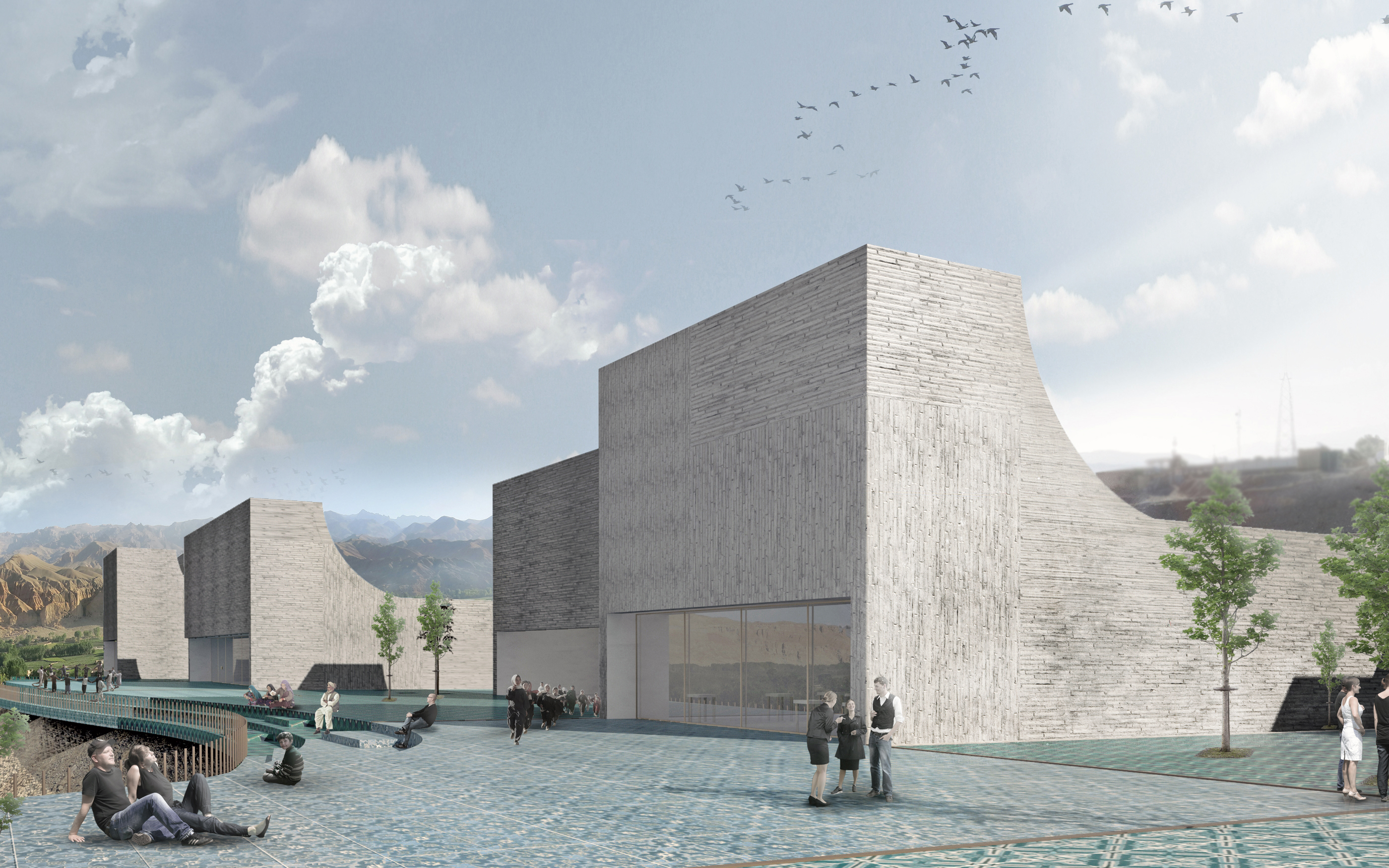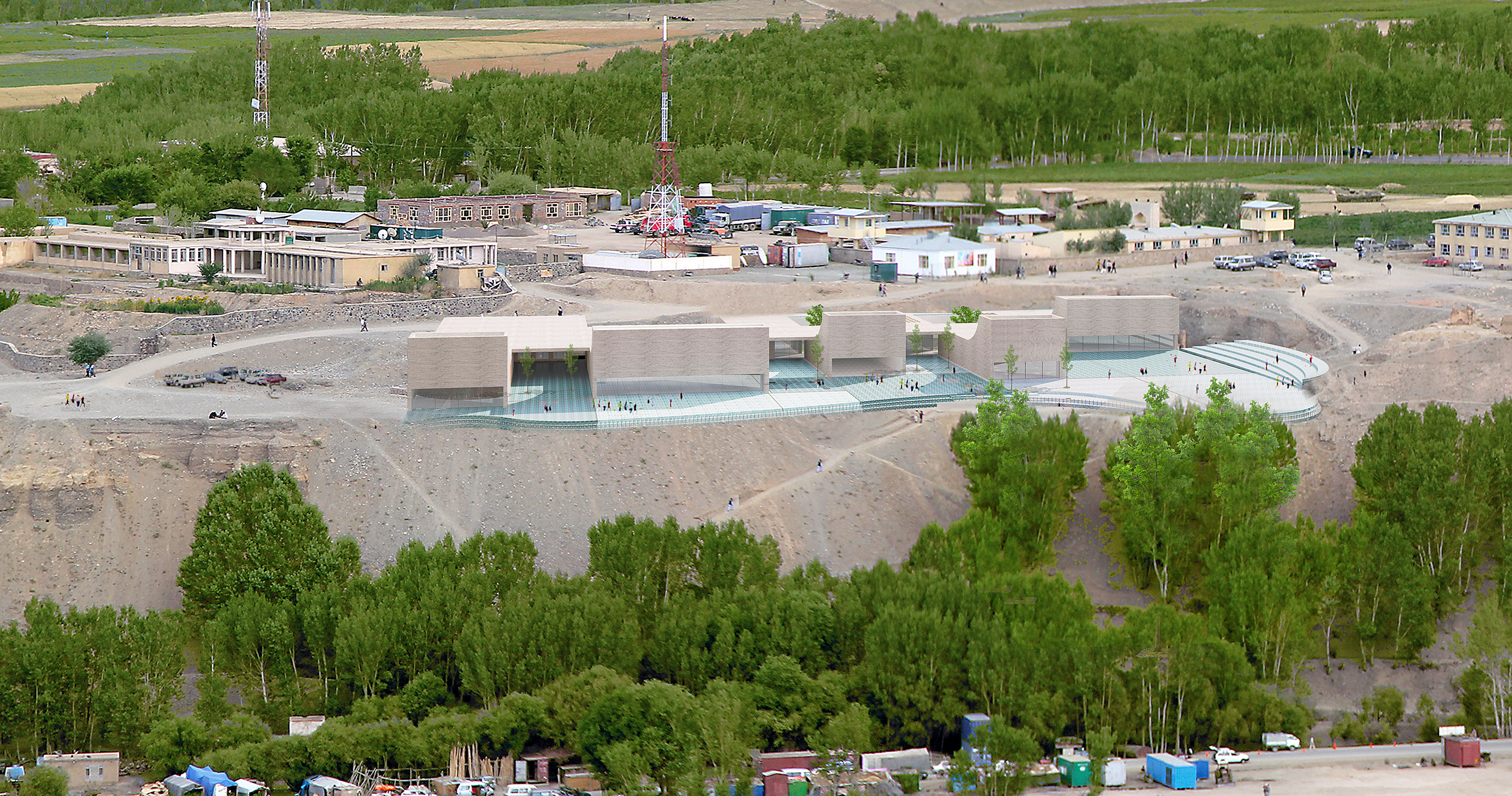











THE AFGHAN RUG
The principal mission of our project for Bamiyan Cultural Center is to create an innovative design which will promote a culture of Afghanistan world widely and will be a meeting place for local communities.
The way to communicate
Our first inspiration was an element that is strongly related to Afghan’s culture - the Afghan Rug. We considered it as a symbol of meeting place and ideas sharing. Our building is a complex of smaller volumes, while each of them represents one major function. Connectet through open space areas and courtyards, the building represents the perfect meeting configuration for building as well as for people. Situated on one common area - ceramic floor “carpet”, by it’s colorful patterns, refers to designes of Afghan Rugs. All together, they create an interesting space, where interior with exterior penetrate and blend, creating an unique character of this project.
EXTERNAL FORM
The final external form of the design is compilation of the aesthetics of contemporary architectural forms, strongly connected to its function, and local building traditions in terms of urban layout and materials. It also results from environmental friendly aspects, as enhenced natural lightning system, ventilation and local materials, that all together match surrounding landscape and create positive impact, enriching the Bamiyan valley with its subtel, majestic form.
The precise positioning of the building on the lower pad and building shape, followed by sun analysies made possible to create an exhibition space that is safe from direct sunlight from morning to late afternoon. The system of dispersing couplas provieds uniform lightning in the exhibition space, making it perfect for art exposures.
The main view of Bamiyan Valley is present in the majority of interior spaces, and creates a dialog between the present and the past. It is a backscene of cultural life of Afghans, and a reference of its rich historical value.
The decision to design the Cultural Center as multiple small forms rather than put together as a whole solid was also preceded by analysys of Afghan residental architecture, climate and social behaviour. By creating different spaces - indoor exhibition and working areas and outdoor pavilon of sculptures, courtyards and an amphitheater, the building can be used in different manners: during day in closed areas and in the evening as public gathering space and festival area. It is no longer just a building, but and open stage for everyday activities and culture development.
Material used in the project were strongly connected to the site. Natural mud brick is not only the most common and cheap material, but also perfectly blends our building into the delicate matter of UNESCO cultural landscape heritage, creating a humble monument. To pay tribute to the local community and everyday practices we incorporated common flora species into garden areas such as wheat, poplars and willows as decorative elements.
During design process it was very important to make a project environmentally friendly and sustainable. That’s why the building is designed with use of solutions that provide access of indirect sunlight and force constant air circulation. By thoroughly analyzed shape we could eliminate the need of mechanical ventilation systems. The single level construction made the building accessible for all and independent from electricity.
